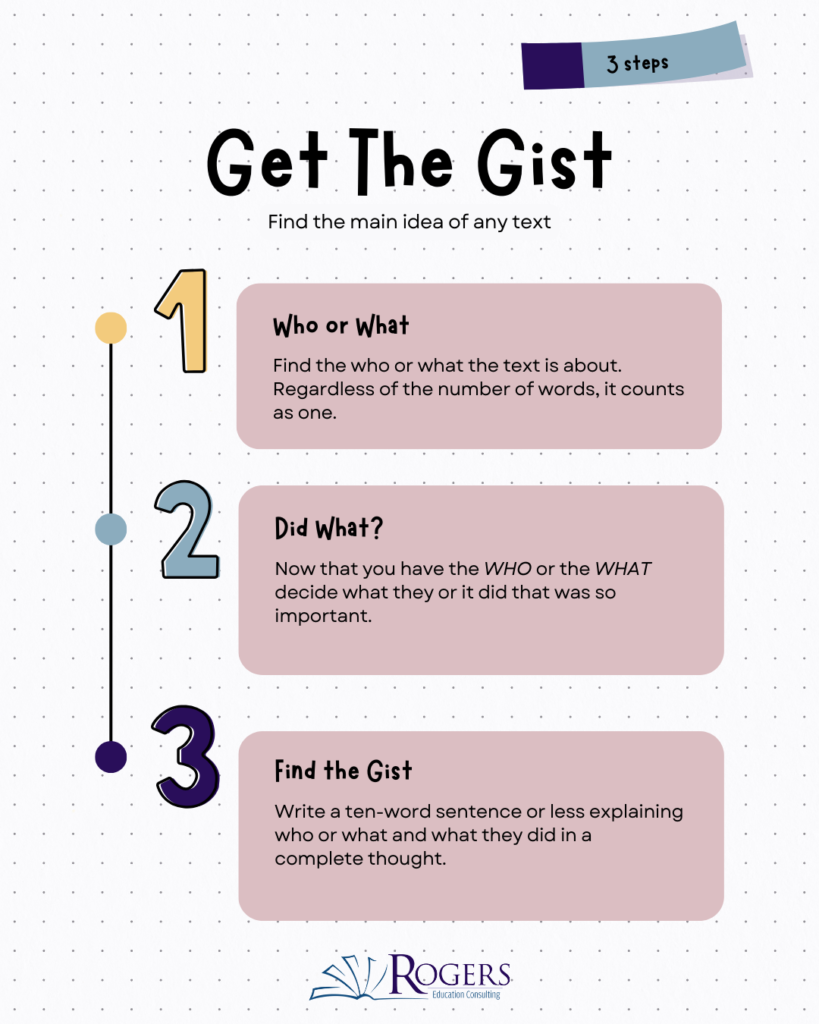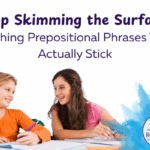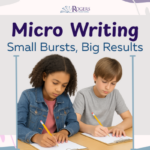Starting the school year with a focus on kindness and the power of words sets the stage for a compassionate and thoughtful classroom environment. In my recent lesson with a fifth-grade class, we delved into the story “Feathers” through a close reading, weaving in lessons on vocabulary, comprehension, and the profound impact of our words.
Getting Started: Prepping for Close Reading
Starting with a good close read yourself is crucial. I read “Feathers” three times—each time with a different focus. The first read was all about grasping the main points and identifying the author’s message. The second was a treasure hunt for vocabulary, sorting words into three tiers: essential, context-specific, and those that shine across various subjects. The third read? That’s when I dug into the ideas, figuring out what might trip up my students and how to make the text as clear as possible.
First Read: Day 1, 30-45 minutes
- Responding to the Text: After the first read, we crafted gist statements—those critical, concise sentences that capture the essence of the text. To create a gist statement, students had to write who or what the text was about and then write 9 or fewer words about the who or the what that captures the essence of the text. One group’s statement, “The Sharp-tongued woman learns words can’t be taken back,” was spot-on. Students also jotted down any questions or thoughts they had. Next, they paired up to discuss, “What lesson did the woman learn?” with sentence stems like, “The woman learned… because…” or “As a result of… the woman learned that…” This sparked some strong discussions!
- Reading of the Text: I read the text aloud to the students, easing their word recognition load so they could focus on the language comprehension side of things. Remember Scarborough’s Reading Rope? By reading the text out loud to the students, I am easing the burden of word recognition and allowing them to focus on language comprehension. As I read, I paused to define key vocabulary. As I read a word that I had planned would be difficult, I quickly defined the word as I read to help the students make sense of the text. When we hit “sharp-tongued,” Ana, usually a quiet kid, blurted out, “Just like my sister,” prompting another student to holler, “You got that right. I see you…. I see you.” Cue the giggles and nods of understanding! Talk about making the text come alive.
- Vocabulary In-Depth: I conducted a quick vocabulary lesson on two of the four chosen words, starting with “accused.” First, I had the students repeat the word after me. Then, I defined it: “If you charge someone with wrongdoing, you accuse that person. For example, if you were the last person using the markers and the cap wasn’t put back on correctly, your group member might accuse you of ruining the marker.” (Teacher problems, right?) Next, I asked the students to turn to each other and share a time they were accused of something, using the sentence frame: “I was accused of _ when I _.” This sneaky tactic ensured they used the vocabulary word in context, solidifying their understanding. I followed the same routine for the word “victim.”
Second Read: Day 2, 30-45 minutes
- Reading of the Text: This time, I had the students read chunks of the text with a partner. First, they read paragraph 1. I posed the question: “What is happening to the woman here?” The student partners responded using the sentence stem: “In this paragraph, the woman .” Next, they read the following two paragraphs, and I asked, “Why does the Rabbi feel this way?” Again, partners discussed, using the stem: “The Rabbi feels because .” I then had some students share their responses and modeled how to build on ideas using sentence stems like: “I agree/disagree because .” They continued reading the next paragraph, and I asked: “How does the woman feel about the situation?” Finally, after reading the next two paragraphs, I asked: “What’s the woman thinking about?”
- Connecting and Reflecting: After the second read, we revisited their gist statements and reflections. They had the chance to tweak and add to their thoughts, using what they had learned. On their exit tickets, they wrote about new insights gained from the day’s reading and vocabulary.
- Vocabulary: Following the same vocabulary routine from day one, we tackled “absolved” and “justice,” making sure they understood these concepts deeply.
Final Read: Day 3, 30-45 minutes
- Comprehension Focus: On the final day, we focused on the author’s purpose. I posed the question, “Why did the author write this?” and had students discuss their thoughts with partners, using the stem: “The author wrote this because __.”
- Read: This time, the students read in partners the entire text. They were charged with discovering the author’s purpose.
- Guiding Thinking About Author’s Purpose:
- We dove into the text’s structure, which is key to understanding the author’s purpose. Together, we mapped out the story’s elements: the conflict, rising action, climax, falling action, and resolution. By breaking down these components, the students could see how the author crafted the story to convey a powerful message.
- Next, we considered what the author wanted us to feel. Did the author aim to make us angry, upset, worried, or something else? How did the author achieve this? As a class, we shared and discussed our thoughts on why the author wrote this story.
- By the end of our discussion, we crafted a shared writing on the author’s purpose:
“The author wrote ‘Feathers’ to teach us an important lesson about how powerful our words are. In the story, a woman says something mean, and it spreads everywhere, just like feathers in the wind. The rabbi shows her that once words are out, we can’t take them back, and they can hurt people. The story reminds us to always speak kindly because our words can have a big impact.”
5th Grade Model Lesson 2024
Culminating Activity
Have students write a Personal Reflection Essay:
- Prompt: Write a one-page essay reflecting on a time when words, either your own or someone else’s, had a significant impact on you. How did it make you feel? What did you learn from that experience?
- Objective: This helps students connect the story’s message to their own lives, fostering empathy and self-awareness.
Reflection
All in all, the lesson was a hit! The students’ connections, insights, and discussions were beyond what I had hoped for. Now, I’d love to hear from you—fellow educators, thinkers, and dreamers. Share your ideas, collaborate, or drop your thoughts in the comments below. Let’s continue to empower our students with the magic of words!
Let’s keep this conversation going! Post your thoughts, share your experiences, or ask questions in the comments.



